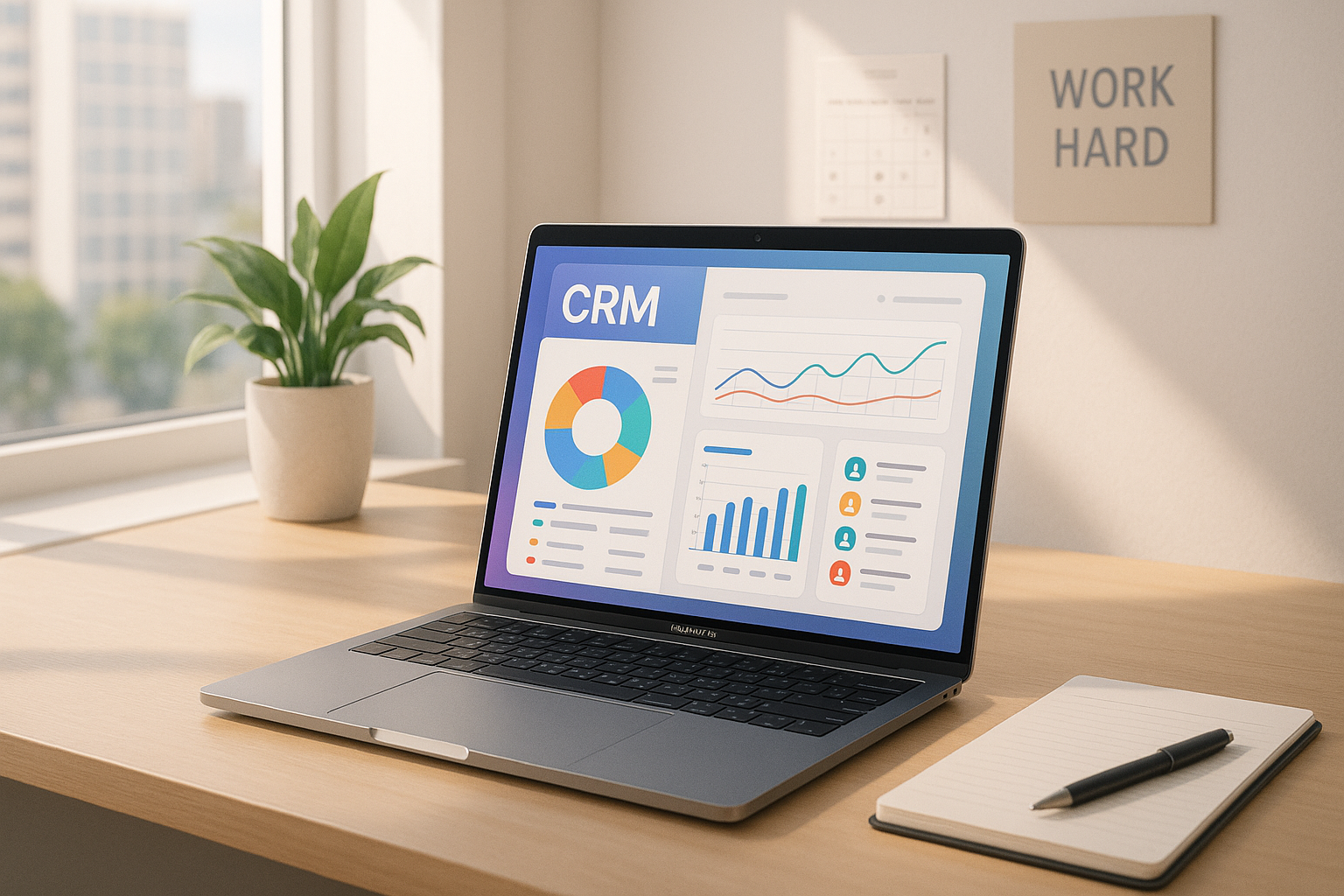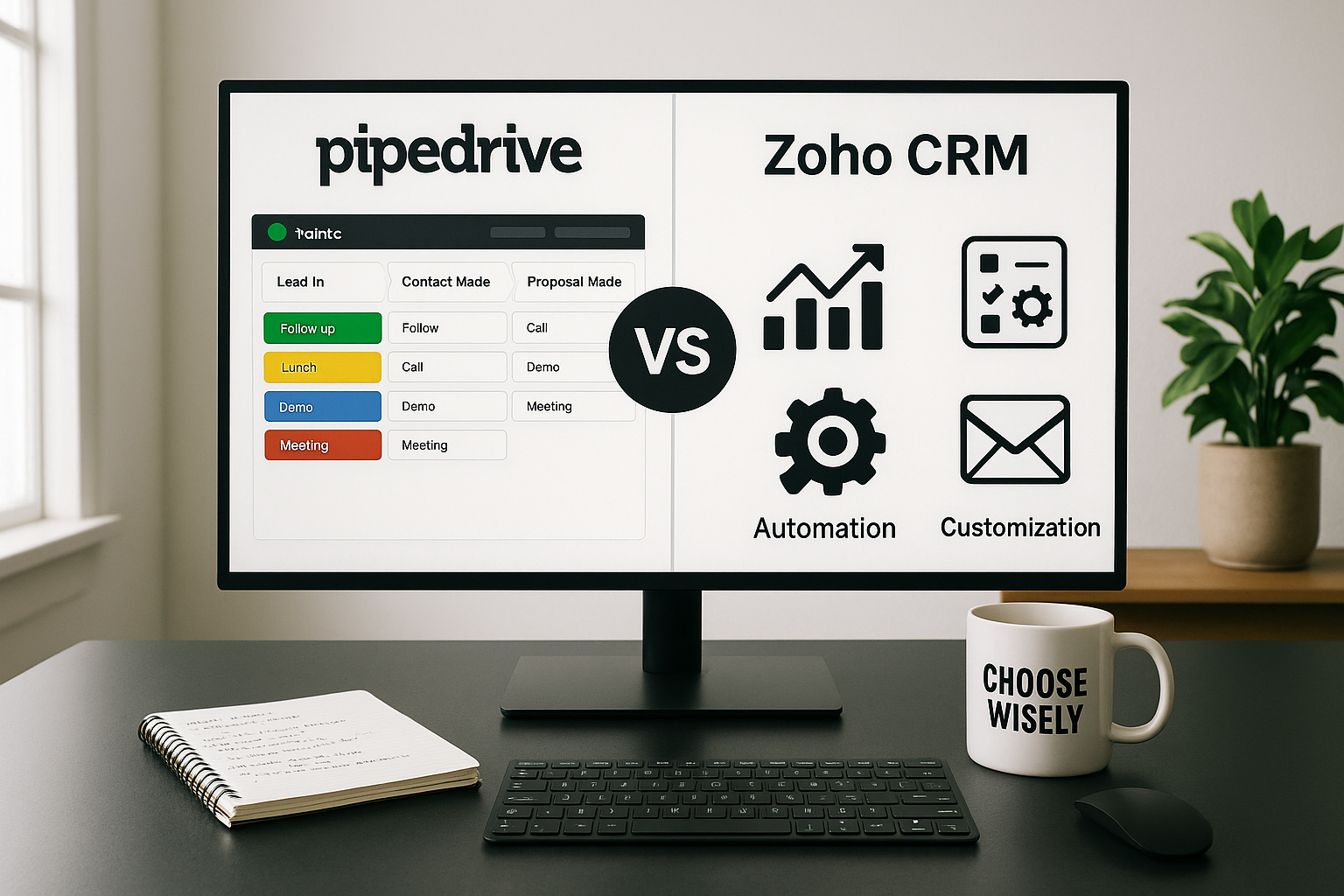Businesses are constantly looking for innovative ways to improve their sales processes. Many of them have found excellent success with sales force automation in their search. We'll go through the basics of what it involves and the difference between CRM and SFA solutions in this comprehensive guide.
What does Sales Force Automation (SFA) mean?

What is SFA? Sales force automation (SFA) or sales automation refers to the use of software and workflows to make sales management more efficient for all parties involved. The goal of different types of sales force automation is to streamline the sales process and reduce the amount of time sales reps spend on manual, repetitive operations.
By storing the whole history and data of your contacts with a client in one place, it simplifies contact management, opportunity management, and task management. It also helps with reminders and notifications, as well as keeping track of sales leads. It was a short sales force automation definition, read on to find out more. [Related article: The Best Marketing Automation Software.]
Why Is Sales Force Automation Important?
What is sales force automation you already know, but why it is important? Sales automation has been shown to increase productivity and sales by 30%. When you streamline your sales procedures, your company's revenue increases organically.
Saves time
There are only so many hours in a day, and if your sales crew spends the majority of those hours on administrative activities, they are neglecting their primary role of selling.
Reps may not understand how little time they have for sales activities until they look at their weekly or monthly sales numbers and question why they are so low. Your sales employees will have more time to focus on the important areas of their jobs by automating routine tasks.
Increases revenue
Manual activities may appear to be simple, yet they consume a significant amount of time. The sales process can be automated with SFA tools and systems, which lowers sales-related costs. This is without a doubt one of the most beneficial aspects of sales force automation.
Your sales team may make better use of that time by closing more deals and gaining more clients. In addition, reducing administrative workload ensures that your sales organization is a streamlined, revenue-driven process.
Introduces opportunities for cross-selling and upselling
Every salesman understands that cross-selling and up-selling are essential for consistently increasing revenue above the threshold. Many sales settings provide opportunities for cross-selling and upselling. Cross-sells and upsells can boost your company's revenue by 30% if done correctly. When a sales representative is swamped with administrative chores and other responsibilities that don't generate revenue for the organization, the company loses out on greater revenue chances.
Sales force automation in CRM can assist you in keeping track of the whole customer journey, including what your customers have purchased, why they have bought some products and not others, which sales rep made which sales, and so on.
Provides actionable insights and data
Customer engagements and activities can be tracked by your sales force automation tools, giving you a complete picture of your sales cycle. SFA technologies can provide actionable insights that can assist sales teams and managers in developing the best sales plan.
For example, sales force automation solutions can estimate future sales opportunities based on your clients' purchasing history and trends. They can also assist your sales personnel in determining when they should pitch new products to their customers. [Related article: The 80/20 Rule in Sales: Improve Your Customer Success.]
Key Features of Sales Force Automation

Contact Management
Increased consumer interaction and the nurturing of good customer relationships are critical for a company's growth. Through contact management, Sales Force Automation features make this simple.
Improve your customer engagement by tracking your communication with them so you can provide them with more personalized experiences. Additionally, the Sales Force Automation functionality allows you to save data from customer interactions and sales activity.
Mobile Usability
Your sales staff have a lot on their plates. Aside from the administrative duties they manage and their own sales activity, they are likely to travel to increase sales for your organization.
You want your sales professionals to be able to update lead statuses and opportunities in real-time, close transactions, and manage processes on the road with a portable sales office on their phones. If a lead buys something or moves through the sales funnel in any other way, the salesperson should get fast alerts and notifications on their smartphone or mobile device.
Pipeline Management
Pipeline Management is another significant element of Sales Force Automation systems. You can track your sales process with SFA from the first inquiry to the final sale. Sales Force Automation software also aids in forecasting sales and identifying patterns.
Sales Forecasting
Using quantitative data, managers and sales reps can use sales forecasting to anticipate future revenue and closure rates. It's possible to evaluate past sales data using CRM sales force automation to predict the future. Because these forecasts are based on mathematics rather than intuition or blind optimism, they are more accurate. You can set sales targets for your business and even budget based on the results.
Task Management
The goal of the sales force automation system is to create a seamless sales process. As a result, it enables sales teams to optimize their workflows by generating tasks and setting reminders to follow up on leads and manage all sales actions. Now that you've learned how Sales Force Automation technology can improve the sales process, it's time to compare CRM platforms.
[Related Article: The Best Marketing Automation Software & Platform]
What's the Difference Between Sales Force Automation and CRM?
The main difference between SFA vs CRM is that the former is designed with a focus on customer happiness and all of the advantages of client retention in mind. It is intended to nurture connections from their inception as potential leads to their development into long-term customers.
CRM gathers and centralizes client data from customer interactions (phone, email, and social media), complaints, inquiries, past meetings, and purchase history to manage these relationships between customers and enterprises. Sales and marketing teams can modify clients' experiences by assessing this data and using their existing client's demands. [Related article: CRM for Sales and Marketing: The Role and Benefits]
SFA, on the other hand, focuses on improving the sales process by making it more efficient and transparent. SFA software will typically include features for potential sales management and pipeline management, giving sales directors a clear image of future prospects, recent sales, and their sales reps' prior success.
To summarize, CRM is client retention and satisfaction software, whereas SFA is client acquisition software. CRM solutions, on the other hand, are usually all-in-one solutions, with capabilities like SFA, integrations, and marketing automation.
What is a CRM Platform?

Customer relationship management (CRM) platforms are used to manage customer interactions across the customer life cycle. The goal is to keep all data relating to client contacts, including the smallest details, in one place. As a result, now that you've thoroughly grasped the benefits and applicability of CRM for your organization, you're ready to improve your customers' experience. There are a variety of well-designed and sophisticated CRMs available. So, choose a CRM wisely based on your company's demands and make sure you're following the best CRM practices. [Related article: What is CRM? The Beginner's Guide to CRM Software.]
Features of CRM Platform
Customer Management
You can keep track of all your client interactions across all customer touchpoints using CRM software. You may provide excellent customer service and nurture customer relationships in this manner, allowing you to retain customers.
Data in One Place
With so much client data, it's critical to keep it all on one platform. You can keep track of what's going on and compare it to the KPIs by storing all relevant data about your customers and company activities on the CRM platform.
Streamline Sales Management
CRM software will enhance your sales funnel from lead generation to closing so you can increase revenues and profits. You may also anticipate sales, execute lead scoring to qualify leads, and streamline the sales process to improve your team's efficiency.
Marketing Automation
By combining the CRM platform with other marketing automation tools, it can be effectively utilized. By connecting marketing automation and CRM, it will be easier to design personalized programs and improve marketing efficiency. To streamline marketing automation tasks, you may also figure out which campaigns work and execute accurate market segmentation.
Reports and Analytics
Another essential benefit of CRM is that you can use analytics and interactive CRM reporting to gather the proper information from all of your customer data. As a result, CRM enables you to identify patterns, target areas for development, and uncover possibilities to accelerate your company's growth.
[Related article: Top 12 CRM Functionalities and Features List.]
Main Sales Processes That You Can Automate
Here are a few instances of sales force automation in action that you may use as a starting point.
Automated Meeting Scheduling
Sales force automation (SFA software) makes it possible to schedule meetings among sales teams or between a potential customer and a salesperson, especially if the software includes a CRM.
These URLs can be customized, so each salesperson has their own unique link to use for meetings and appointments. The hyperlinks can be included in email signatures. Booking links can be used by your marketing team to engage with and nurture leads.
Automated Sales Collateral
Content designed to connect with the lead and urge them to make the sale is included in sales collateral or materials. These materials can take a long time to create, which means your salespeople aren't concentrating on making money.
To automate sales collateral, create a Google Drive folder that is shared by the whole sales team. The goal is to expand the collaboration options so that developing these things becomes a shared task that can be completed more quickly.
Automated Record Creation
Your sales teams may appear to be overburdened with time-consuming administrative responsibilities like record keeping and data entering. You can set up a sequence of actions in a CRM to automate the creation of records.
Each time a lead visits the pricing page, your sales reps should be assigned to a different assignment. Then, if the lead requests a demo, your rep should work out a contract. A follow-up automated task will successfully make the record as the demo trial nears its end.
Automated Reporting
We've previously discussed how automated reporting can save your sales team time and reduce human mistakes. A CRM and SFA system that is integrated may track previous sales patterns and interactions and generate accurate reports based on quantitative data.
This will provide sales managers with all of the information they need to assess their team's performance and develop strategies to boost the company's sales results.
Read a Detailed Salesforce CRM Overview
Should I Go for Sales Force Automation Technology or CRM Platform?
The question that now arises is which software to use in which case. To do so, you must understand the basic features of each product and how they relate to your business needs.
Some of SFA's responsibilities can be handled by a CRM platform. Through CRM customization and integrations, many organizations notice a jump in their growth. Prospecting, collaborative selling, contact management, and streamlining customer interactions are all aided by this.
Sales Force Automation should never be relied on solely because it is only responsible for commencing the sales process. CRM may then take over and ensure that customers stay customers for years to come.
How does sales force automation work?

SFA operates by triggering a chain reaction in response to specific inputs. It's not like you're instructing a robot to do your work for you. It's more similar to creating a fun house. An area where you can set traps that will spring into action when a specific event occurs. You set the traps ahead of time, and the system takes care of the rest while you focus on other things. [Related article: Successful Sales Environment.]
Consider the case when one of your sales representatives recently made contact with a hot lead. The lead requested some time to consider the situation and promised to return within a week. After a week, the leader still hasn't reached out for whatever reason.
Your sales rep, on the other hand, is busy with many other responsibilities. They may neglect to send a follow-up email or make a phone call, resulting in that hot lead becoming cold. The longer they are allowed to sit on the lead, the more likely they are to move on to the competition.
It allows you to forecast and prepare for such eventualities rather than reacting after the ball has been dropped. Your sales rep could set up an automatic reminder using SFA. The reminder pings the sales rep after a week, reminding them that they need to follow up. As a result, one less ball is dropped without any effort on the side of the sales representative.
This is only one example of sales force automation in action. However, the essential concept is the same across the board: anticipate which tasks must be completed and prepare everything ahead of time. When the trigger is pushed or the timer runs out, the duties are completed automatically.
How to choose sales force automation technology for your business
When it comes to selecting a sales force automation vs CRM technology supplier, the first step is to fully comprehend your company's requirements.
Consider the following questions: Is the company losing customers as a result of poor post-sales management? Are salespeople requesting assistance? Is the company's database becoming too large for Excel to handle? Are your salespeople frequently absent from the office?
It's also crucial to consider who will use the SFA tool on a daily basis. Yes, managers will need to log in from time to time to check on the status of high-value deals, but it will primarily be used by field sales reps.
CRM is a good illustration of this. When managers are given access to the reams of sales data contained within the program, they are sold on the amazing insights and reporting capabilities they can deliver. [Related article: How to Choose CRM System]
Some of these products' capabilities are indeed amazing, but only if they are used by frontline salespeople. They're the ones who enter the data, not the software.
Make sure to include your salespeople in the decision-making process when narrowing down possible providers. Allow them to experiment with some of the tools or maybe conduct a short pilot. They'll use the tool if they enjoy it and see real value in its implementation.
Conclusion
Now you know what is sales force automation software and CRM SFA difference. How do you choose the right sales force automation software or CRM for your business? It's useful to know what your objectives are and how the sales process works. There are dozens of possibilities on the market, each with its own set of advantages.
You should, however, choose a tool that is simple to use, scalable, and easy to apply. Pipeline management, lead tracking and scoring, opportunity management, and lead production are all elements to look for. Some SFA solutions can be used as part of customized CRM software, however, this is an expensive and inflexible option.
Try out Our Free CRM Comparison Tool

.png?width=140&height=140&name=Noah%20(1000%20x%201000%20px).png)


(2).jpg)
